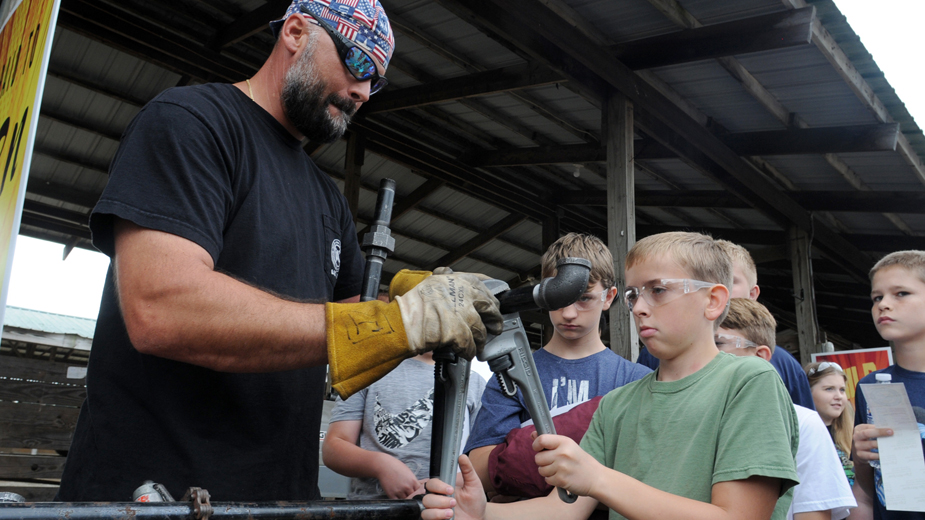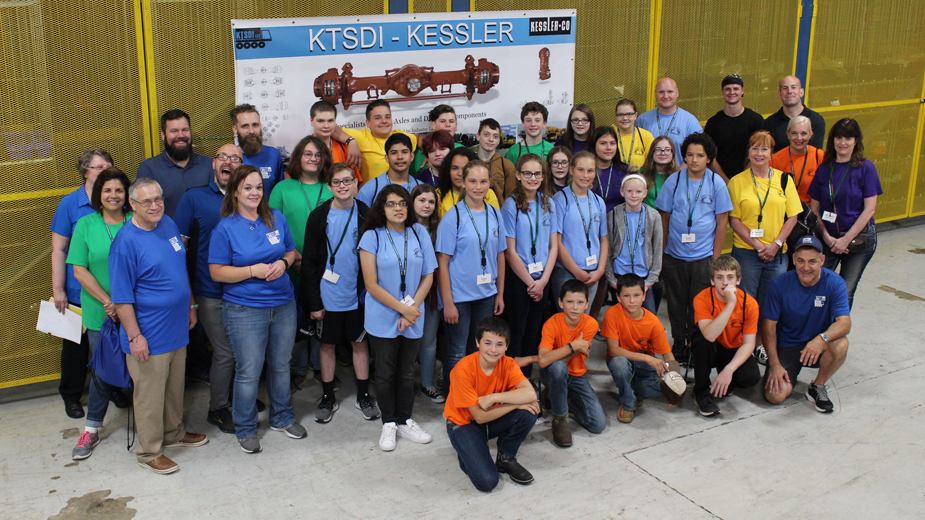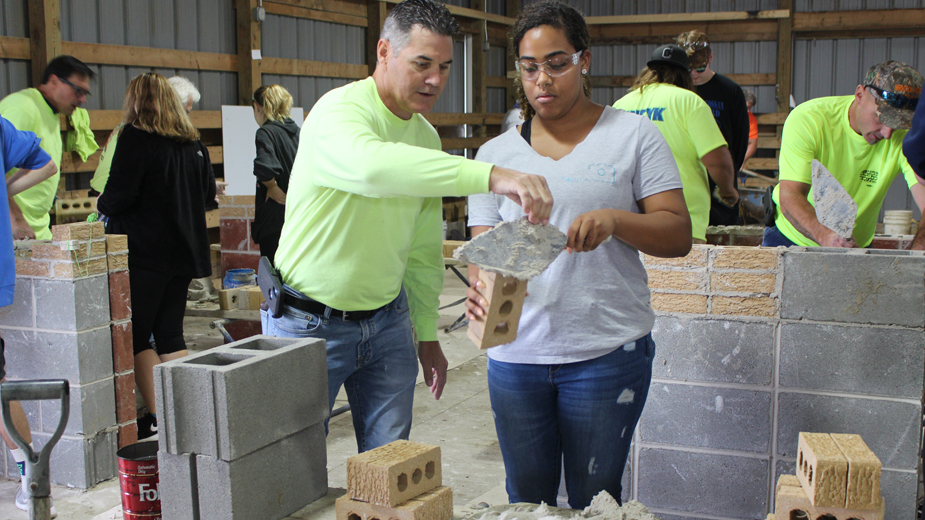YOUNGSTOWN, Ohio – Collaboration at the local, county and state levels has proven to be an essential tool to address issues in workforce development, particularly with training and education.
Coverage during the first year of the Brain Gain program included interviews with economic development and business leaders, as well as educators, which revealed effective collaborative strategies among entities that at one time would have been competitors.
At the macro level, working across state lines has netted regional organizations multimillion-dollar workforce development grants that are typically out of reach for smaller organizations. Last October, the Mahoning Valley Manufacturers Coalition and the West Central Job Partnership in Pennsylvania were awarded a $2.5 million workforce development grant through the U.S. Department of Labor.
The monies were used to boost innovative apprenticeships in the Oh-Penn Interstate Region, which comprises six counties in Ohio and eight in Pennsylvania. Efforts focused on two talent pipelines, including one at the high school level and one at the adult level, the former of which is a pre-apprenticeship program that pairs juniors and seniors with area employers.
About 90% of the students in the pre-apprenticeship program earn work experience in the time between their junior and senior years of high school. And a large percentage of them continue to work weekends during the school year, says Jessica Borza, executive director of the Mahoning Valley Manufacturers Coalition. Before the pandemic, the program had 217 new apprentices with a 94% retention rate.
In working with several employers in common industries, Borza finds, “About 80% of their needs are similar.” Although they are competitors, the employers work together as part of the solution by defining career pathways, identifying needed skills and providing advancement opportunities for their employees.
Borza discusses collaboration with Jeff Leo Herrmann, CEO of The Youngstown Publishing Co., in the new Brain Gain Leadership Series podcast.
“Collaboration is a little bit of a dance at times,” she says. “You’ve got to make sure that you understand everybody’s vested interest; but that you can really demonstrate that by working together, there’s so much greater value. We can have so much more impact if we’re all rowing in the same direction, and getting that alignment.”
This can be challenging for business owners used to doing things their way but suddenly find themselves in a room with their peers. Borza advises leaders looking to collaborate to speak to the greater good while also showing business owners what’s in it for them.
“I often find myself in the role of a facilitator. So [I’m] trying to make sure that all the voices in the room get heard,” she says. “It’s so important to make sure you’re letting everybody speak their opinion. And then you’re listening for the commonalities. Where’s their 80% of the agreement? How can we make sure that everybody is OK with that overlap and that common direction and build on that?”
Employers are also working closely with colleges, universities and K-12 schools in the development of curriculum geared toward jobs they need to have filled and exposing students to career opportunities in the region.
Industries that seem to have had the most success with this are manufacturing and the trades.
The inaugural Mahoning Valley Skilled Trades Expo drew more than 4,000 high school students from the five-county region to the Canfield Fairgrounds for a daylong event that gave students hands-on exposure to the skilled trades.
Organized by the Builders Association of Eastern Ohio and Western Pennsylvania, the Western Reserve Building Trades and educational service centers from Mahoning, Trumbull and Columbiana counties, the daylong expo was intended to get high school students thinking about career paths other than college.

The main selling point: avoid student debt by them getting paid to learn and have jobs waiting for them after high school.
“Having that career set before you even start learning is a different way to do it versus going to college for four years or six years, getting that degree and coming out trying to find a job,” Gary Hartman, association services director for The Builders, said at the event. “Locally, a lot of college graduates are struggling trying to find jobs in their field and pay off their student debt.”
For the most part, the message seemed to be received. While some of the students The Business Journal interviewed remain set on attending college, the event opened their eyes to other opportunities.
Connor Hicks had planned to attend college. But the trades appealed to him because they provide a pathway to get to work right out of high school. Last year, Hicks took construction classes at the Columbiana County Career and Technical Center during his senior year at Leetonia High School.
“You’re getting paid to go to school. You’re getting paid to learn,” Hicks said. “Outside of your learning, once you’re done with your years, you’re going to have a high-quality paying job outside of high school.”
It’s a message echoed by county educational service centers that connect schools with businesses. Each ESC has a business advisory council to facilitate cooperation among schools, businesses and communities. That can include job shadow opportunities for students and teachers, planning visits to area employers and exposing students to technology and curricula.
During a Brain Gain roundtable in March we asked regional educators and business and community leaders how they are plugging the brain drain.
Anna Marie Vaughn, superintendent of the Columbiana County Educational Service Center, said the school’s business partners were approaching the problem from two angles: working with elementary school students for a long-term approach and exposing high school students to short-term opportunities.
At a Manufacturing Your Future fair in October 2019, sponsored by U.S. Rep. Bill Johnson, R-6 Ohio, about 80 10th graders visited manufacturing sites and were exposed to that work, Vaughn said.
“Because they don’t know what manufacturing is today, they think of it in terms of that and what it was when their parents worked,” she said. “So another one of our initiatives is to look at how we can educate parents and bring them into the fold and understand what manufacturing is today. That’s a huge initiative for us.”
Last summer, the Mahoning County Educational Service Center organized two-day career exploration bus tours that took groups of seventh- to ninth-grade students to eight employers in Mahoning County, including manufacturers, trades, small business, food service and government.
One stop was KTSDI in New Middletown, where 26 students saw firsthand what the company does and whom it serves. Students toured specific stations at the company, among them the shop, shipping and logistics.

Getting students interested early gives companies like KTSDI a better chance of having a qualified work pool to hire from, said KTSDI manager Ken Timmings. Otherwise, having smartphones at a young age leads children to believe “they can Google their way through life. And that doesn’t leave us with any qualified workforce,” he said.
“If we introduce them much sooner, they’re going to pick up the tools of the trade and maybe show an interest and lead a career path,” he said.
Pictured: At the 2019 Mahoning Valley Skilled Trades Expo, Hayli White, then a senior at David Anderson High School in Lisbon, receives a lesson from Matt McClester from Bricklayers and Allied Craftworkers Local 40.
